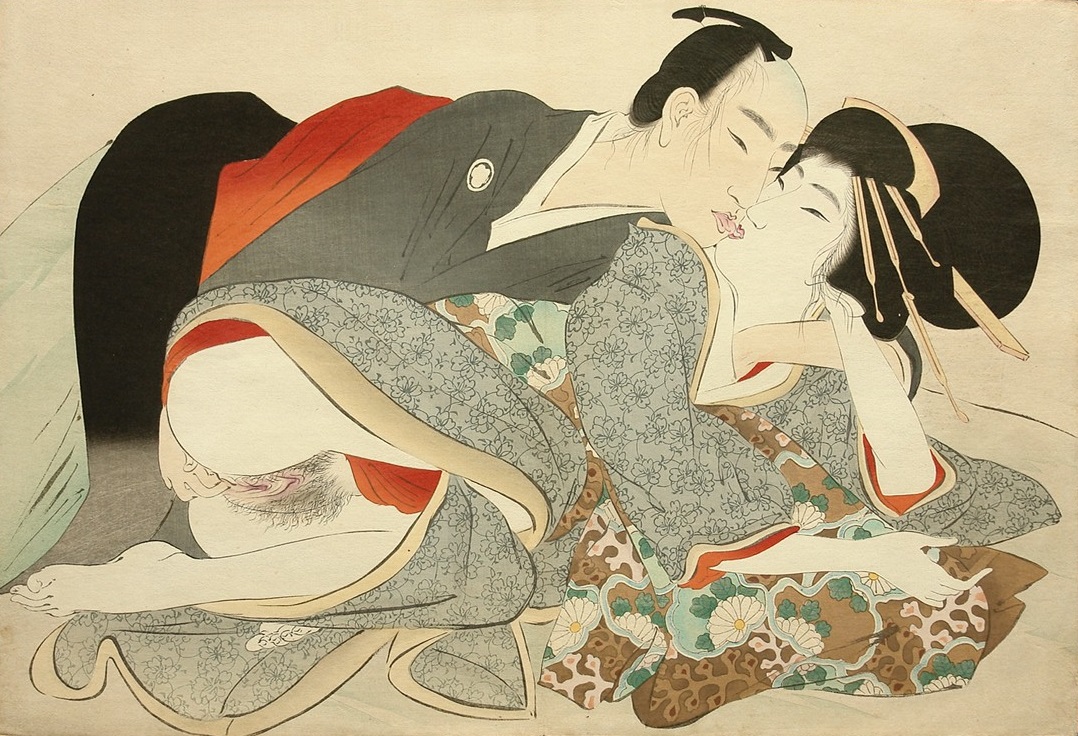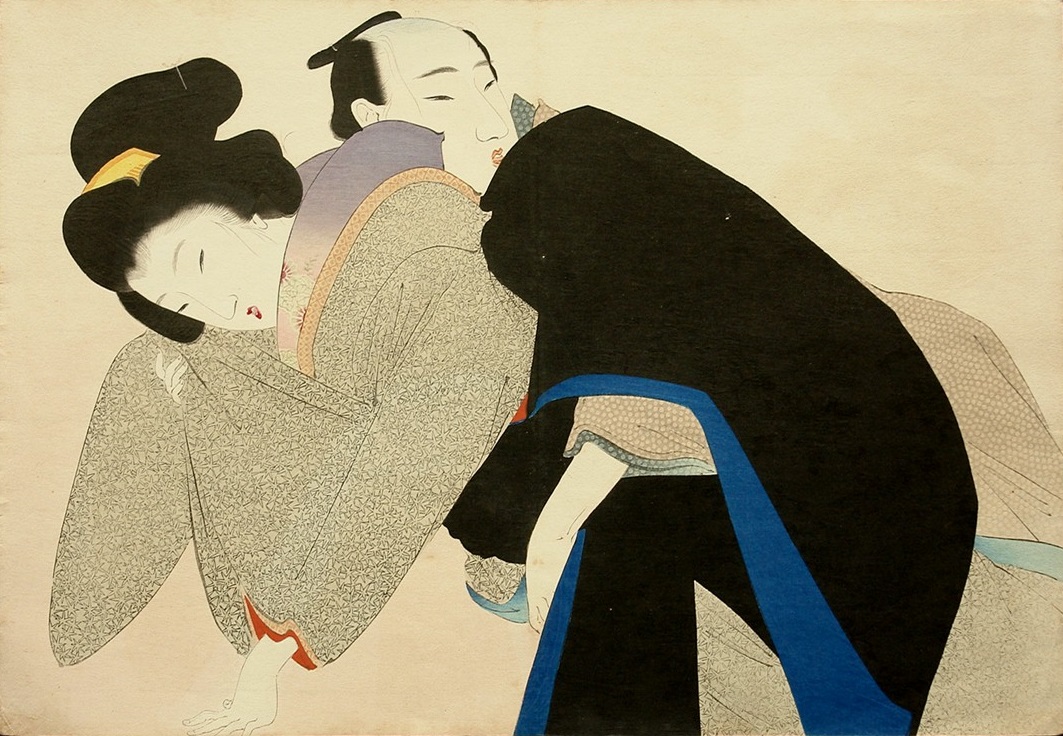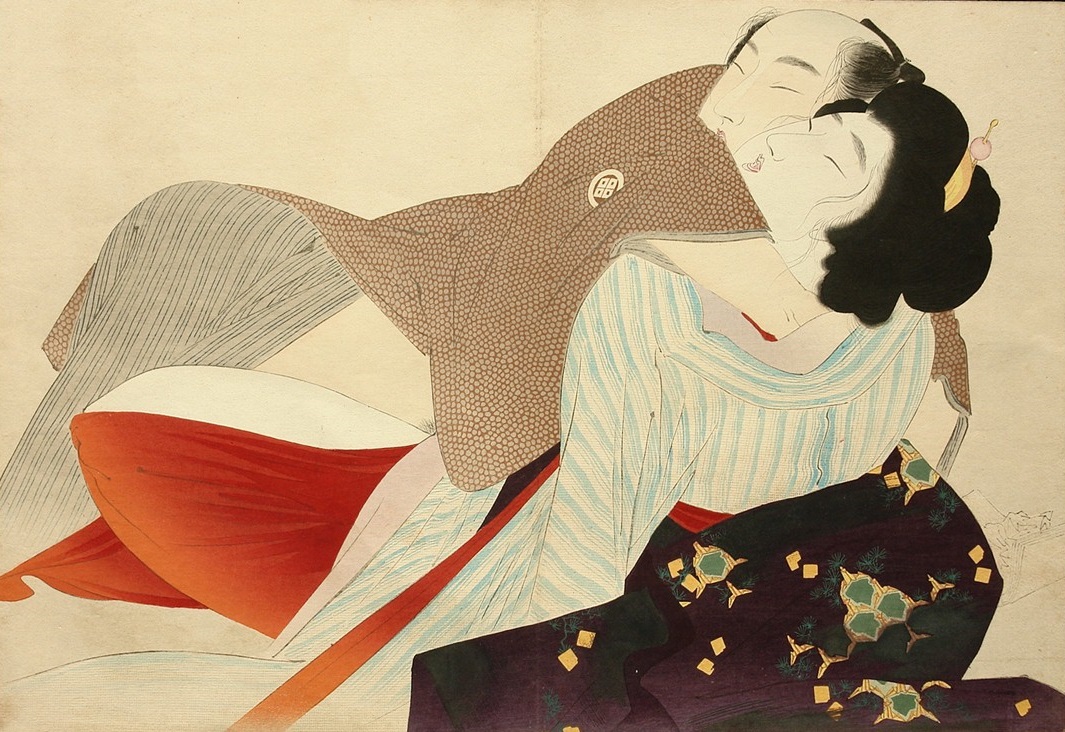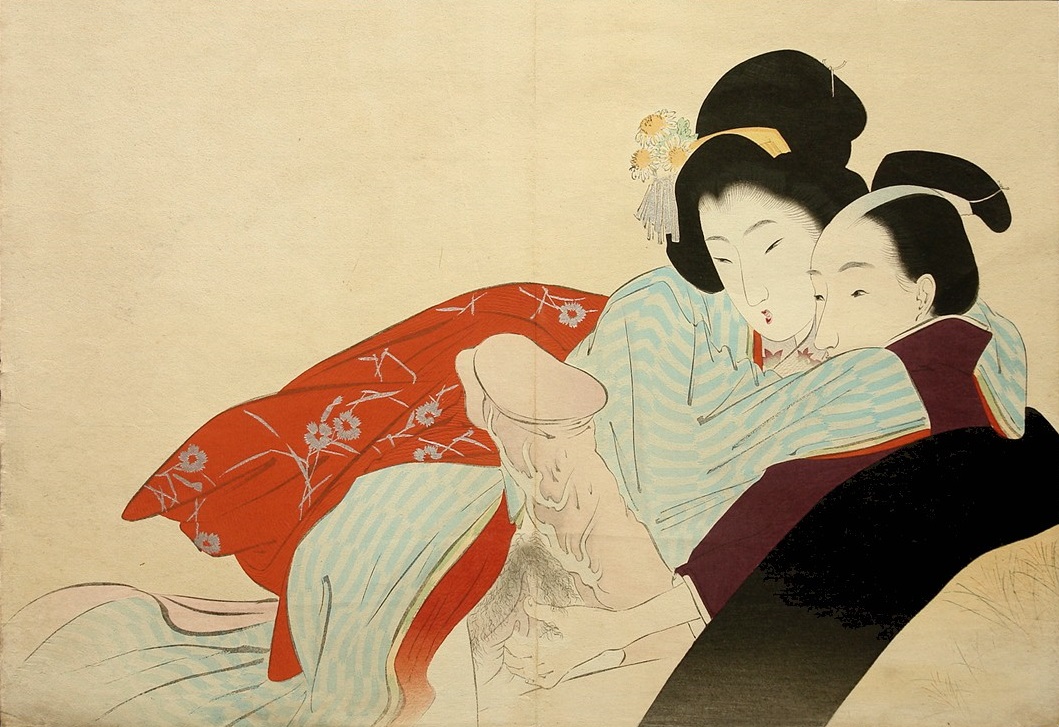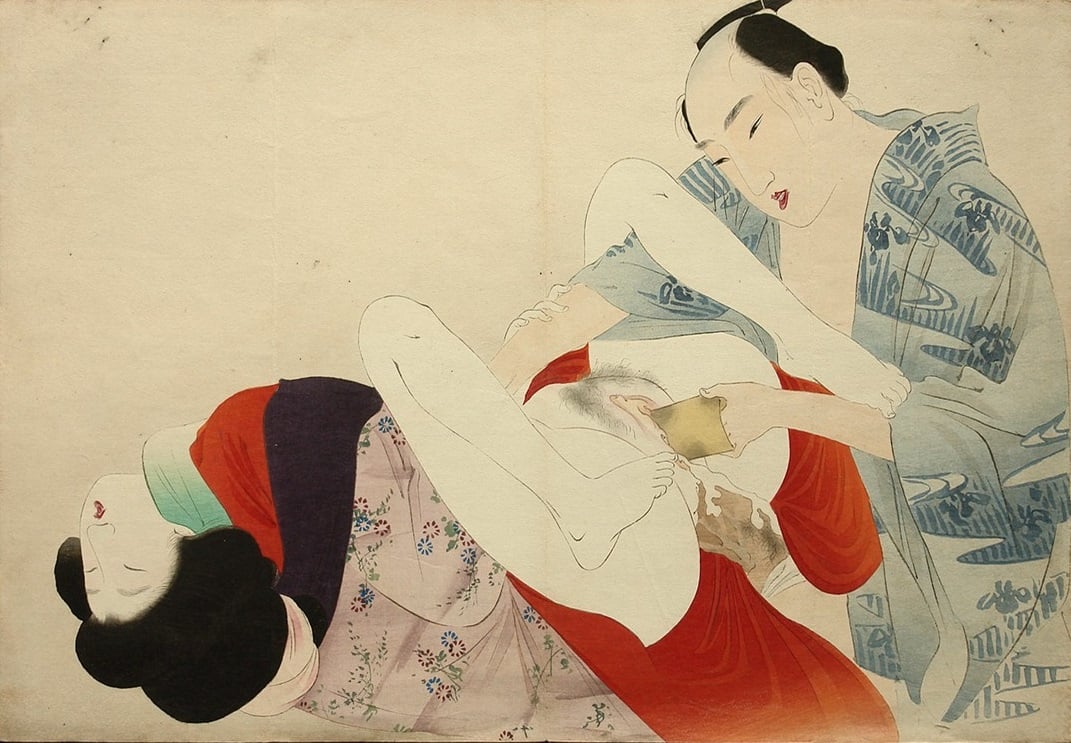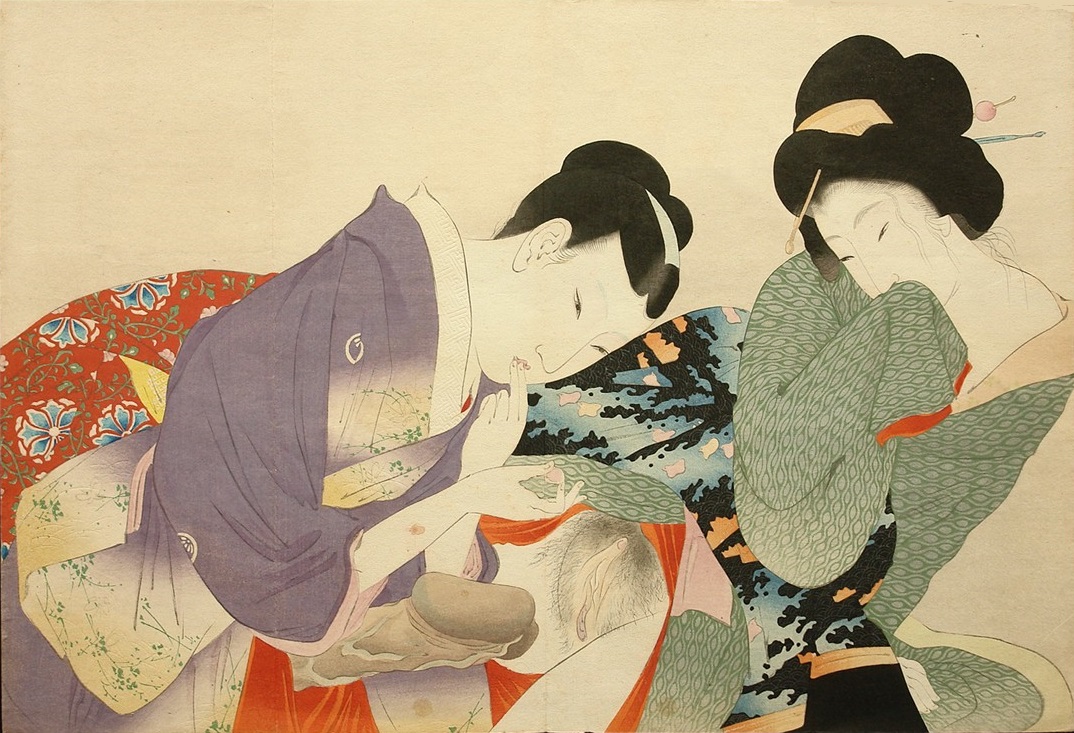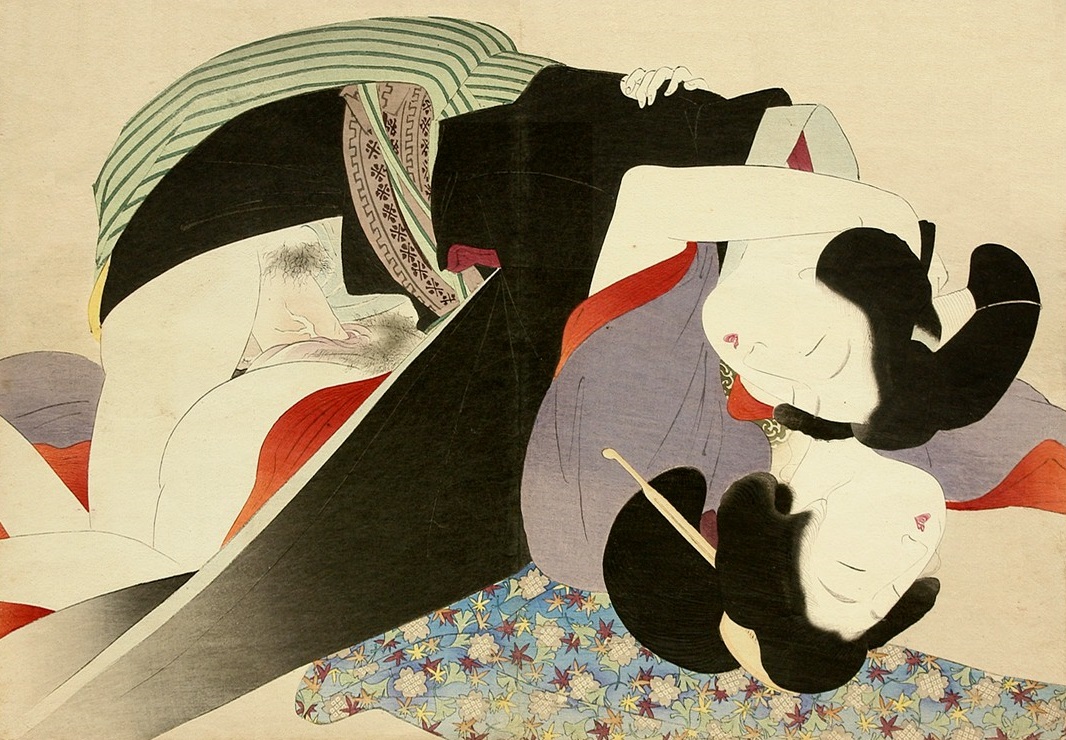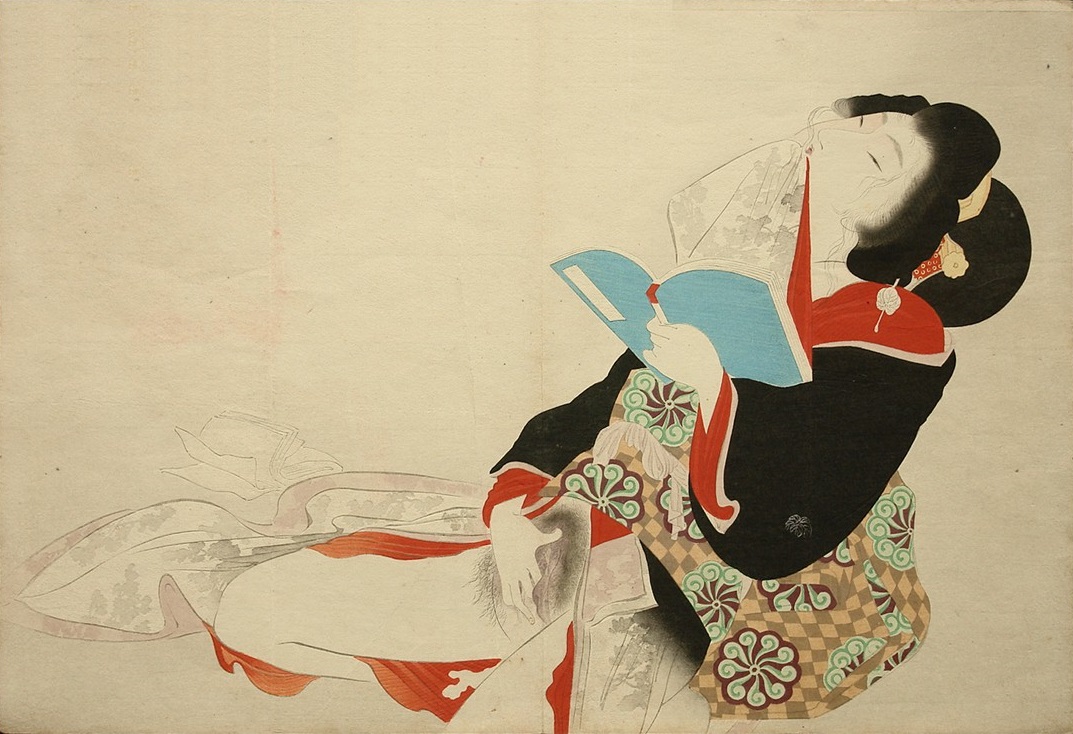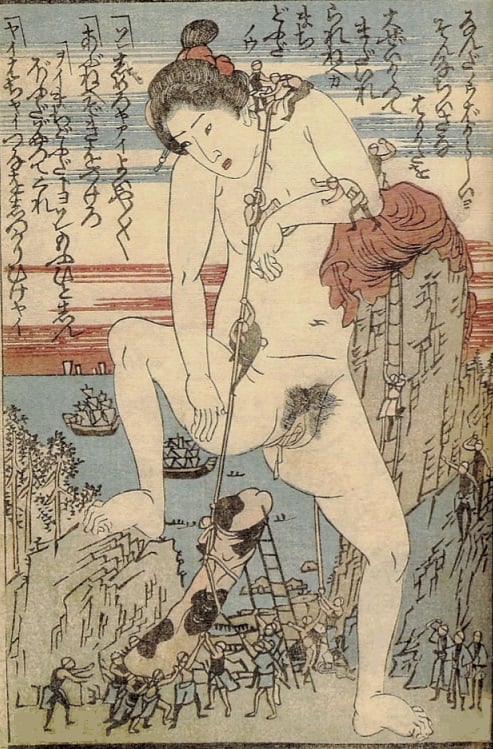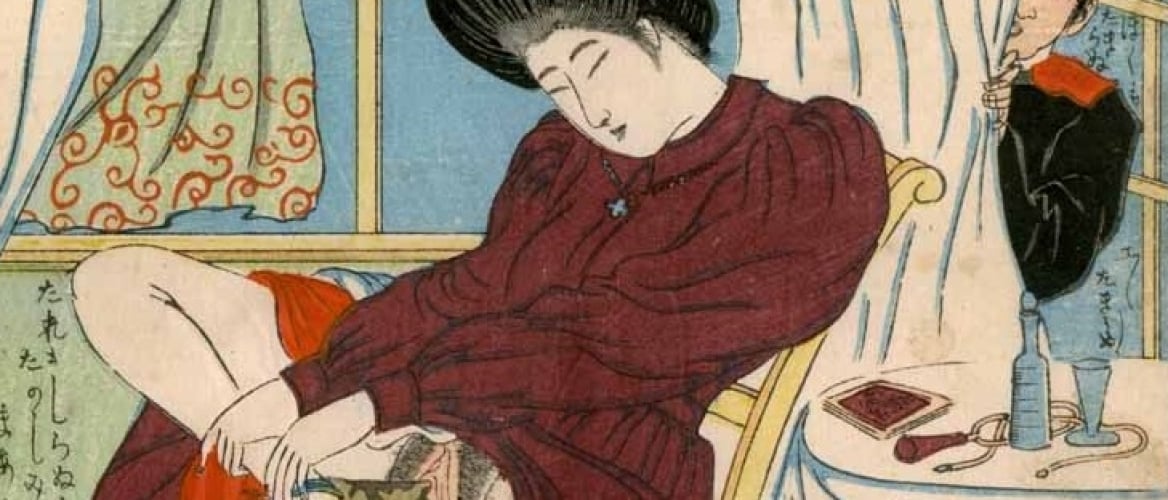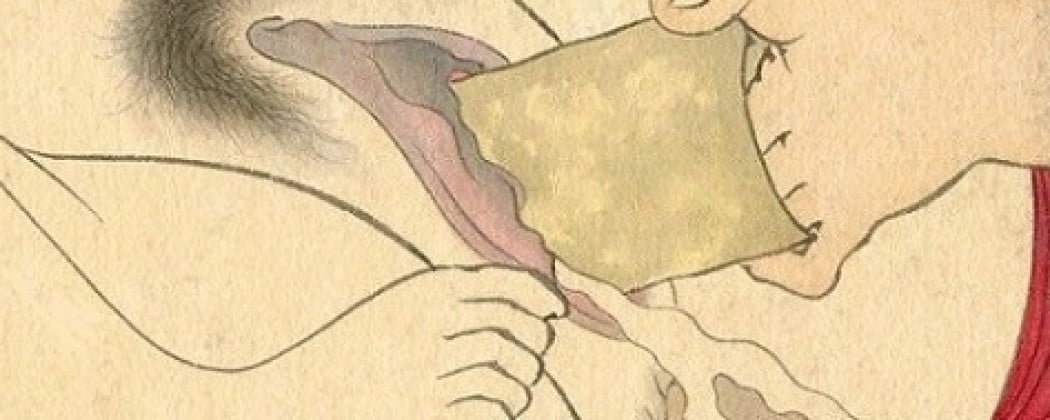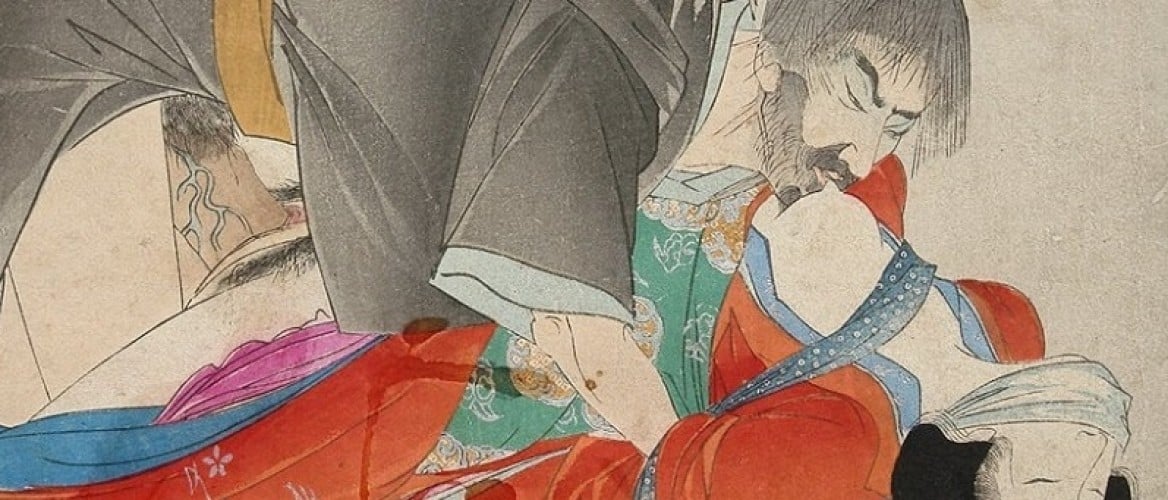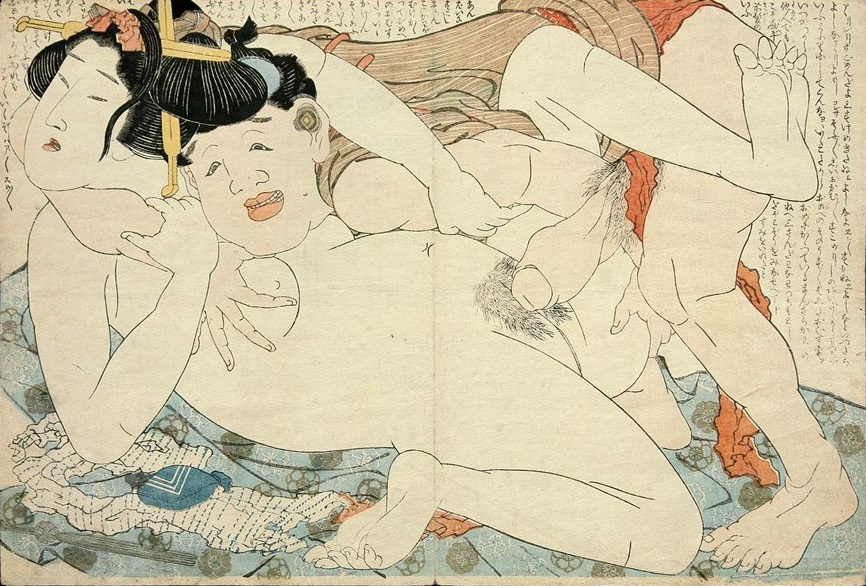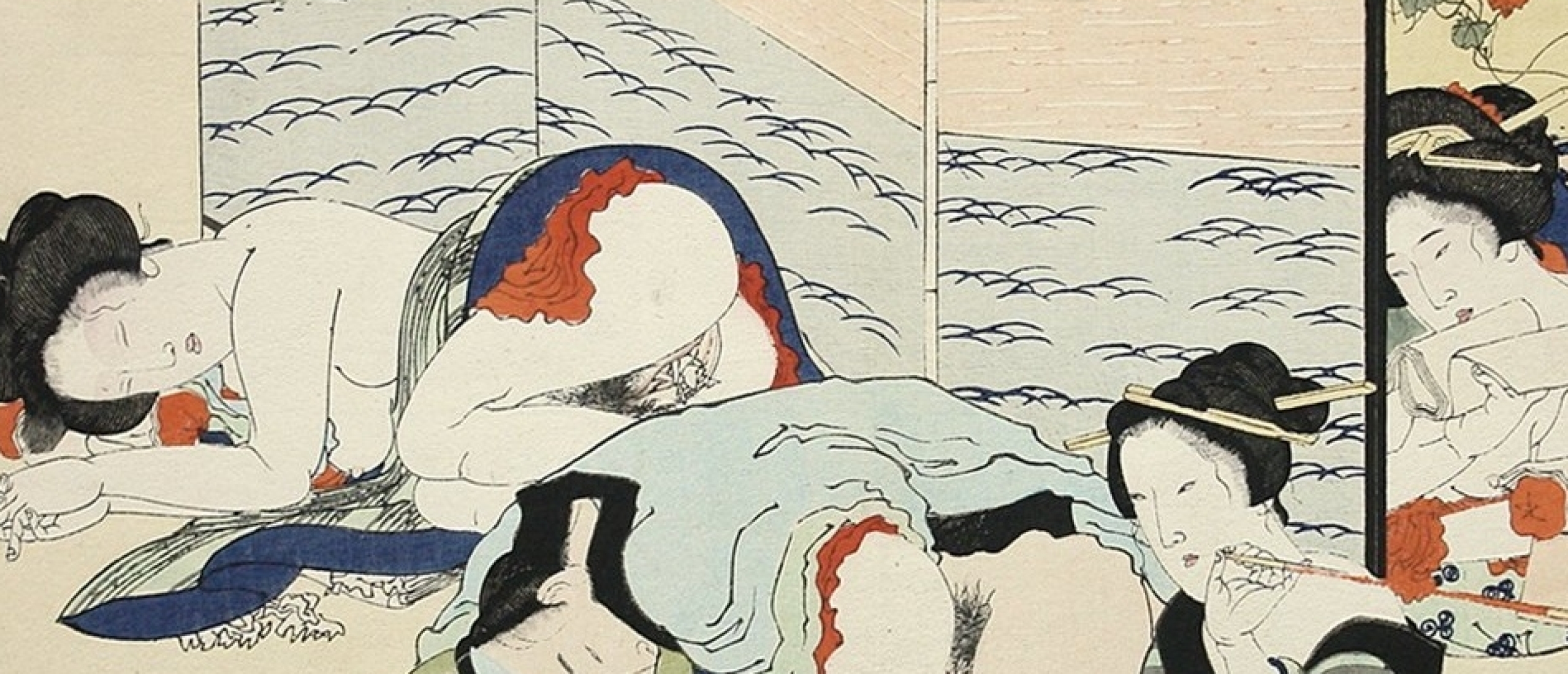
It is mainly the innovative designs that make The Poetic Intercourse stand out. Like in Hokusai’s The Adonis Plant (the fourth image is a direct tribute to the “egg-shaped” couple of Hokusai’s series) the protagonists almost fill the entire image plane with the attention solely focused on the participants and their clothing. There’s some debate concerning the attribution of the Yakumo no chigiri (The Poetic Intercourse)-series and that’s why I have included both artists (Ikeda Terukata and Tomioka Eisen) in this description.
British Museum
Either way, The Poetic Intercourse –series is among the best shunga series of the Meiji period and is treated in depth in Shunga in the Meiji Era: The End of a Tradition? by Rosina Buckland and an essay called Shunga in the Meiji era by Timothy Clark in the book Shunga: Sex and Humour in Japanese Art, 1600-1900 (London: British Museum Press, 2013).
Latest Fashions
The prints in this album are characteristic of shunga from the Meiji era: the printing is exquisite, with a generous use of metallic pigments and bokashi (tonal gradation) and gauffrage to express the lovely quality of the kimono. The contour lines are equally refined. Many of the images feature the latest fashions of the time for major department stores like the Mitsukoshi. These were sometimes issued as a form of advertisement. The set was published by Wada Tokutaro, who was the owner of the publishing house Shin’yodo.
A sensual scene of a caressing couple passionately tongue-kissing.
In the book Japanese Erotic Fantasies the above design has been described as follows: ‘This print has stylistic affinities to the work of Terukata in that it is unfettered by text or excess design elements. The facial expressions suggest that the sex is not consensual and that the man is forcing himself upon the woman’.
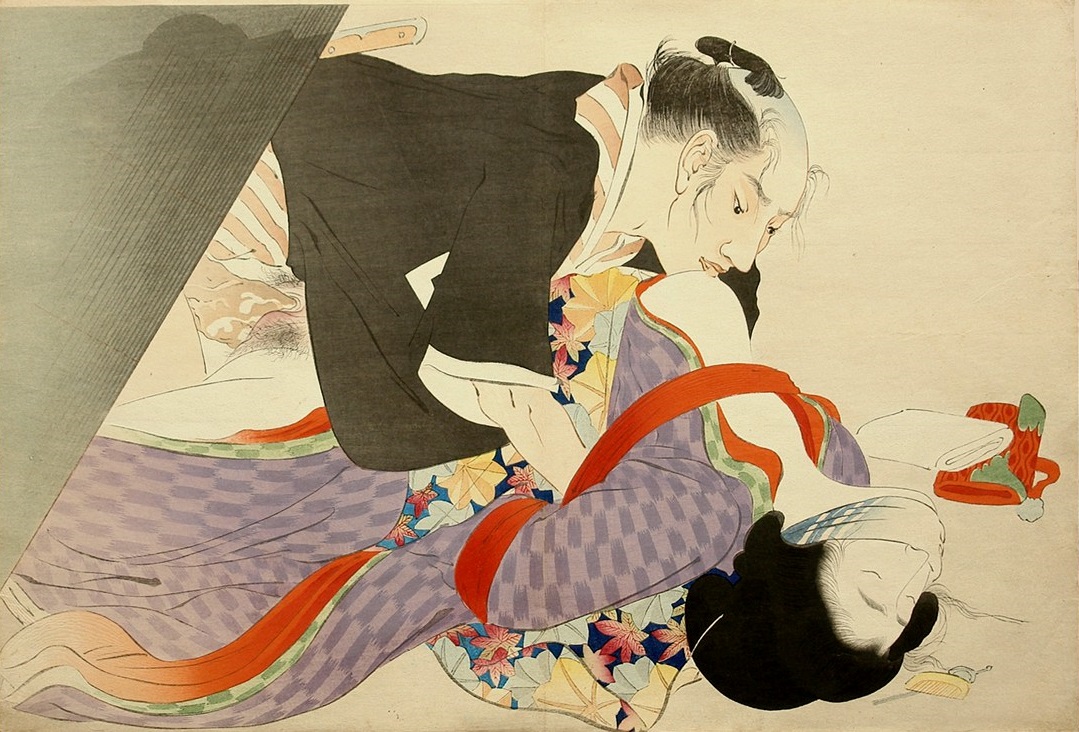
‘Rape of a tied girl‘ (c.1895-1906)
Talking about non-consensual, here we are witness to the graphic portrayal of rape. The eerie atmosphere, evoked by the defenseless pose of the tied woman undergoing the horny needs of her assailant, will just bake your retinas. One of the better designs of The Poetic Intercourse series.
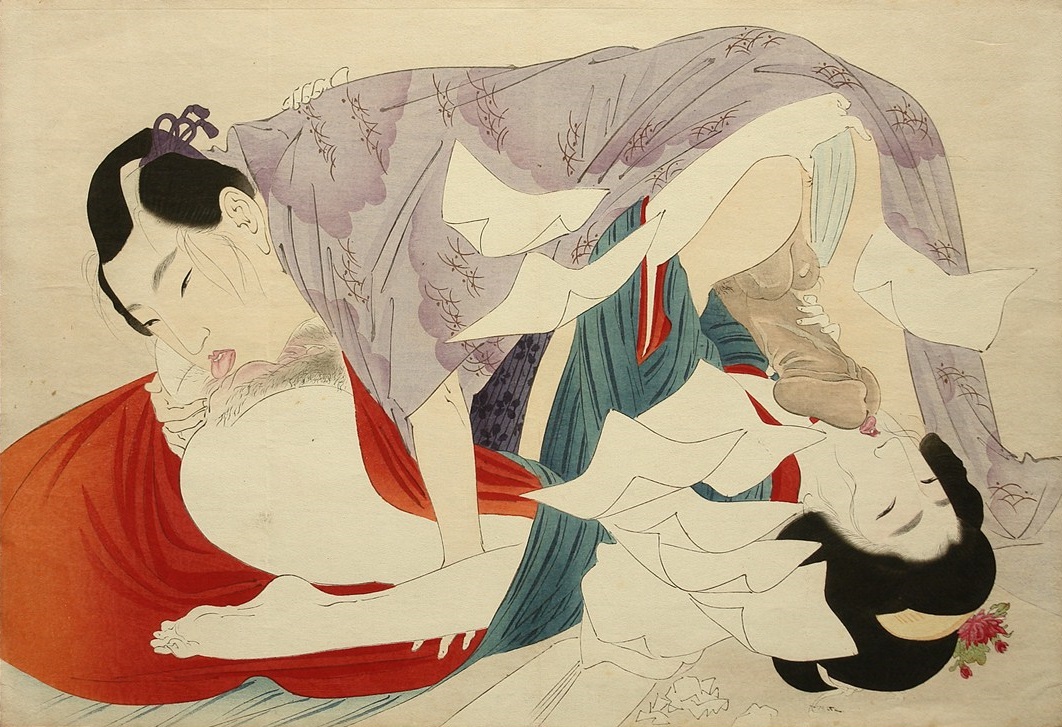
‘Mutual oral sex‘ (c.1895-1906)
A dynamic portrayal of a couple in a reciprocal love play featuring fellatio and cunnilingus at the same time, also known as Soixante-Neuf (Pose 69). The swirling tissues accentuate the fleeting impulse of this energetic couple. Look at the thumb of the female, that adds a special surprise to the male’s pleasure.
A middle-aged man passionately embraces his lady. He is sticking his arm underneath her kimono while stroking her back.
Although the portrayed figures in The Poetic Intercourse have a realistic feel about them, in this scene an exception is made by depicting a young man with gigantic phallus. He is stroking the private parts of his female partner while she’s admiring his striking member.
A shy couple (probably newlyweds) reluctantly explore each other. It is as if they are aware of our gaze…
A young girl all dressed according to the latest fashion of that time is sitting on the lap of her male lover.
A man is penetrating his lover anally while at the same time pushing a dildo (harigata) into her vagina. She’s so aroused that her body fluids are dripping all over his penis.
A young man is trying to obtain lubricant from a shell to put on his penis while his female partner shyly awaits. The artist has added some striking clothing details with various color combinations
A young couple making love missionary style. The girl embraces the neck of her male lover passionately as she leans back in delight.
A solo female caresses her private parts as she holds a shungabook for inspiration. She bites into a handkerchief while the body fluids flow alongside her legs.
Tomioka Eisen (1864-1905)
At the age of eighteen Tomioka Eisen became a pupil of Kobayashi Eitaku (1843-1890). At this time he worked as a draughtsman at the office of the army general staff and at the same time started as a freelance artist. After the death of Eitaku in 1890 he became an independent artist.
High Demand
His skills were in high demand and he was paid well by his clients (magazines and publishers). Eisen was an ambitious artist and won a silver medal at the collective Japan Art Institute/ Japan Painting exhibition and became a juror in later exhibitions. Just at the start of his career he died at the age of forty-one when the kuchi-e was still in full swing.
Ikeda Terukata (1883-1921)
Terukata, who died like his contemporary Tomioka Eisen at an early age (38), was a gifted pioneer of the shunga genre. He was a pupil of Mizuno Toshikata (1866-1908). At Toshikata’s studio he met and later married Sakakibara Shõen (1888-1917), who as Ikeda Shõen became an artist in her own right. Terukata and his colleagues were inspired by the westernization of Japan in the Meiji period.
Text Balloons
They omitted the conventional “text balloons”, they were no longer attracted to the Yoshiwara as a subject but saw it more as a representation of exoticized ‘Bohemian Parisian culture’ and their depictions were placed in a more realistic setting. This style also appealed to European collectors and thus Japanese publishers now had a new outlet in with a foreign clientele. Terukata’s images resemble earlier shunga only in the use of the orihon format and in recent years there has been an increasing amount of interest in his work.
There was also a smaller inferior chuban-sized version issued of the The Poetic Intercourse… 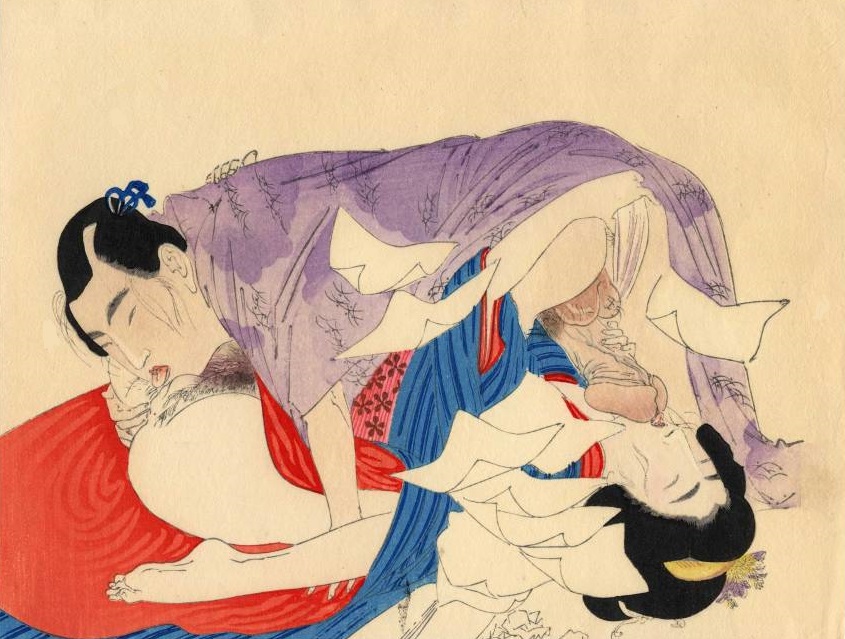
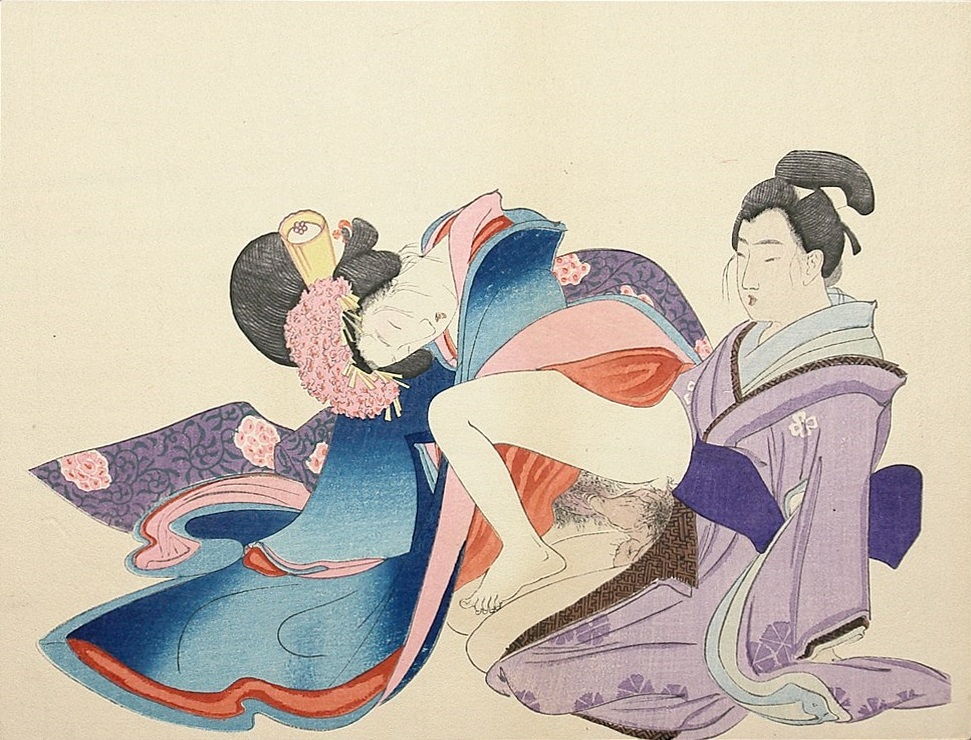
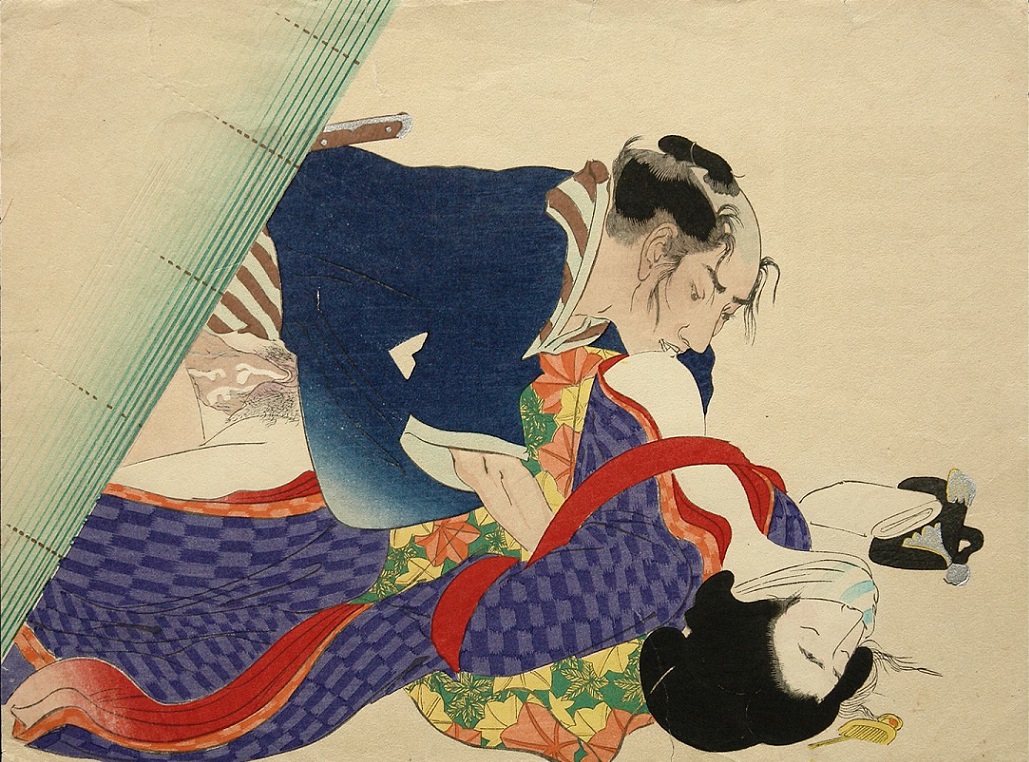
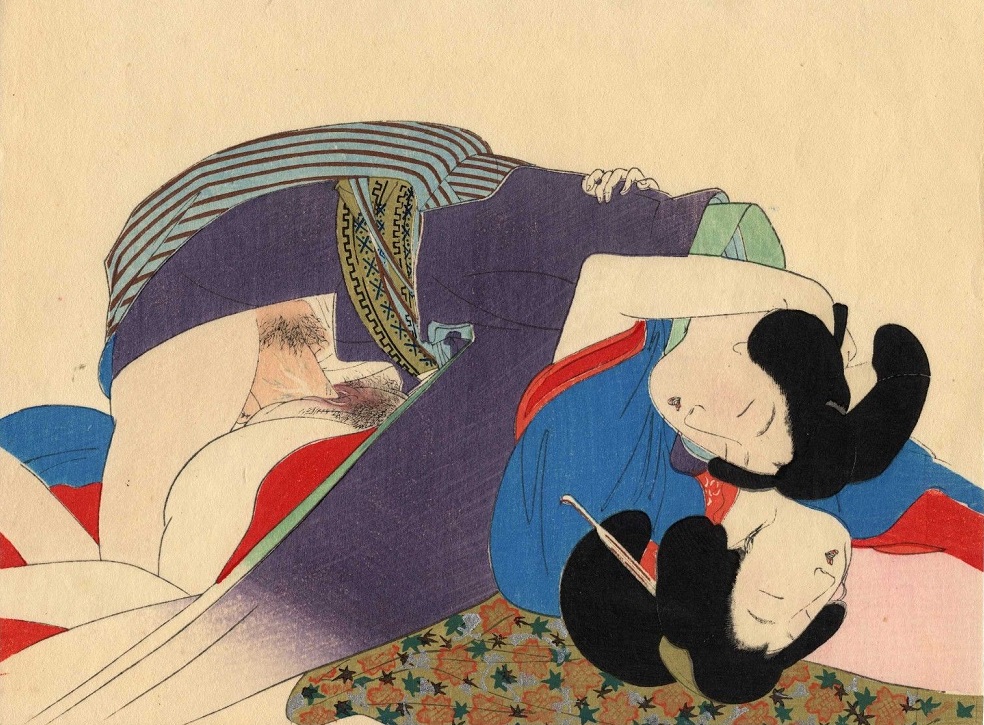

Click HERE and grab your chance to become the owner of one or more of the above gems…!!!
What’s your favorite design from this series?

